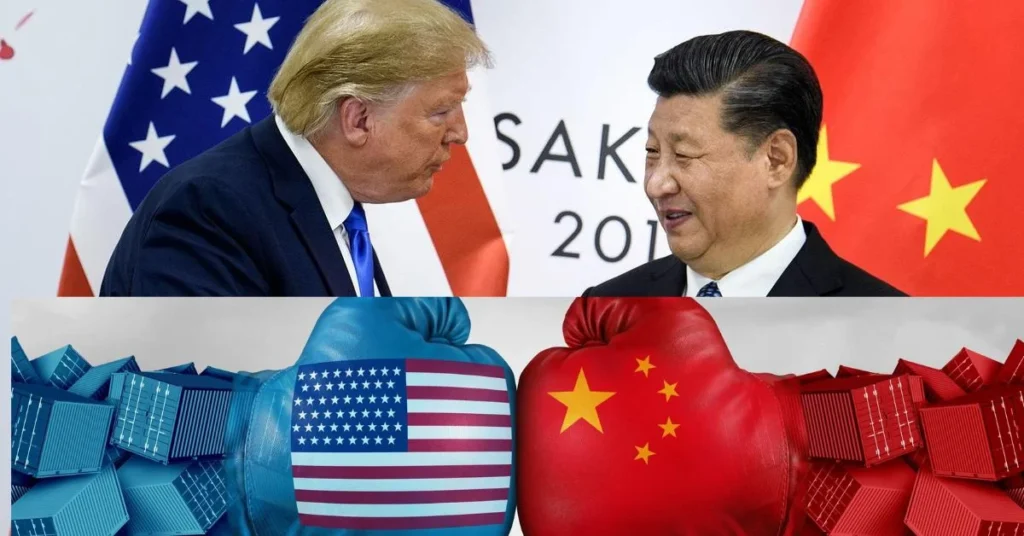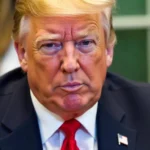Introduction
The long-standing economic rivalry between the United States and China has reached another critical juncture with the imposition of new tariffs. The U.S. government has announced a 10% tariff on Chinese imports, citing concerns over China’s role in the fentanyl crisis. In a swift response, China has retaliated with tariffs on key American exports, further straining the already fragile trade relationship between the two largest economies in the world.
Breakdown of the Latest Tariffs
U.S. Tariffs on Chinese Goods
The U.S. administration has implemented a 10% tariff on a broad range of Chinese imports. Officials argue that these measures are necessary to curb illicit fentanyl flows into the U.S., holding China accountable for its role in the crisis. This decision follows a pattern of economic pressure that has characterized the U.S.-China trade relationship since the Trump administration’s initial trade war in 2018.
China’s Retaliatory Measures
In response, China has introduced a series of countermeasures, including:
- 15% tariffs on U.S. coal and liquefied natural gas (LNG)
- 10% tariffs on crude oil, agricultural machinery, large vehicles, and pick-up trucks
- Antitrust investigations into American tech companies, including Google
- Export restrictions on rare metals crucial for high-tech industries
Impact on Global Markets
Stock Market Reactions
The announcement of the new tariffs has triggered volatility in financial markets. The S&P 500 index fell by 0.72%, reflecting investor concerns over economic instability. Increased uncertainty has led to shifts in commodity and currency markets as well, particularly affecting the USD/CNH exchange rate.
Energy and Commodity Markets
China’s tariffs on U.S. coal, LNG, and crude oil are expected to reshape global energy trade. China, the world’s largest coal importer, relies primarily on Indonesia, Russia, and Australia for its supply. However, U.S. LNG exports to China had been increasing, nearly doubling from 2018 levels. These new tariffs may disrupt trade flows, with China turning to Russia for cheaper energy sources.
Conversely, the U.S., as the world’s leading LNG exporter, is expected to redirect its supply to Europe and other Asian markets, mitigating the economic impact on American energy producers.
Agricultural and Automotive Sectors
China has also placed a 10% tariff on agricultural machinery and large-displacement vehicles. However, this move is unlikely to have a severe impact, as China primarily imports vehicles from Japan and Europe rather than the U.S. The tariffs on agricultural machinery may serve to bolster China’s domestic industry, reducing reliance on foreign imports.
Technology and Strategic Metals
Google Antitrust Investigation
Beyond tariffs, China has launched an antitrust investigation into Google, signaling a broader economic standoff. Although Google’s core services have been banned in China since 2010, the company still operates in the country by partnering with local developers. The impact of this probe remains uncertain, but it underscores Beijing’s willingness to use regulatory measures as a counterbalance to U.S. trade policies.
Export Controls on Rare Metals
China has imposed export controls on 25 rare metals, which are vital for military, aerospace, and semiconductor industries. As the world’s dominant producer of refined rare metals, China’s restrictions could have significant global implications. However, Beijing notably refrained from restricting exports of certain critical materials that it imports from the U.S., leaving some room for negotiation.
Political and Diplomatic Ramifications
The escalation of trade tensions has both economic and geopolitical consequences. With elections on the horizon in the U.S., the Biden administration may continue leveraging trade policies as a tool to exert pressure on China. Meanwhile, China’s calibrated response suggests a strategic approach, balancing economic retaliation with a willingness to engage in negotiations.
Future Outlook: More Tariffs or Diplomacy?
While Beijing’s tariffs are a direct response to Washington’s actions, their measured implementation suggests a potential window for dialogue. A key factor in the evolving situation is the upcoming discussions between U.S. and Chinese officials. If negotiations prove successful, exemptions or reductions in tariffs may be possible, preventing further economic disruption.
However, if the U.S. views China’s response as an outright challenge, additional trade restrictions could follow, exacerbating the conflict. Past trade wars have demonstrated the risks of prolonged economic battles, affecting global supply chains and economic stability.
Conclusion
The latest round of U.S.-China trade tensions underscores the fragility of global economic relationships. While both nations have implemented tariffs in response to perceived economic and security threats, the broader implications extend far beyond their bilateral trade. Markets, industries, and diplomatic relations will continue to be shaped by these developments in the coming months. Investors, businesses, and policymakers must remain vigilant as the situation evolves, with both risks and opportunities emerging from the unfolding trade dispute.
For more on how global politics is shaping economic decisions, read about Trump’s Gaza Proposal and its Global Controversy.







